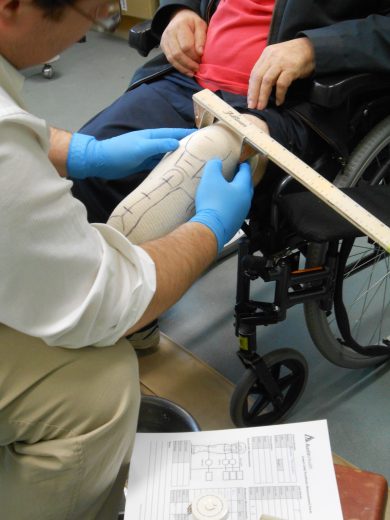Speaking to another amputee can make a real difference to your recovery and ease your concerns. We call this type of assistance Peer Support.
Following surgery, you will need time to recover. It is also a time to set goals about your journey ahead. Here, we help to guide you through the process to navigate your pathways forward.
Effectively managing your short and long term health will lead to better outcomes and prevent future problems.
Getting the right kind of prosthesis to suit your lifestyle needs and daily level of activity is important.
People are often concerned about the costs involved in getting a prosthesis. In Australia, there are a number of different funding schemes and it can be easy to get confused and to know what you are eligible for.
A prosthesis may be used to help you to regain your mobility and independence.
This information sheet explains the process of fitting your first prosthetic limb.
A prosthesis is an artificial limb which is made to replace the limb you have lost. There are a number of things to think about when using a prosthesis after a lower limb amputation.
These include:
The amount of energy you will use to drive the limb.
How good your balance is.
How good your general health and muscle control is.
The amount of pressure that will be placed on your stump (residual limb) and amputation wound.
Not everyone will use a prosthesis, or will find one helpful. If you can use a prosthesis, there are lots of different things to think about to ensure that the prosthesis will meet your needs.

The steps and stages of trying a prosthesis are:
There are different ways of holding a prosthesis on, these are called ‘suspension methods’. Suspension methods can depend on a number of different factors, including:
TIP - make notes about how your prosthesis feels and take the notes to your next appointment.
Straps: some prostheses are held on with a strap system, there are lots of different options depending on your level of amputation
Anatomical: sometimes your Prosthetist will create a suspension system that can be ‘pulled on.’ Once it is on it suspends over your bones around your knee
Sleeve: for some people with a below knee amputation, a sleeve which fits over the prosthesis socket and onto your skin can be used to hold the prosthesis on
Pin: there are certain types of socks and liners that roll onto your stump which have a pin at the end. The pin locks into the prosthesis to hold it on. There will be a button on the outside of the prosthesis which allows you to release and remove the prosthesis
Vacuum: vacuum systems are used to create an air seal against the socket. The valve in the socket lets the air out but will not let the air back in
Suction: it might be possible to have the socket of your prosthesis directly against your skin. This holds the prosthesis on with a really tight fit using a one-way air valve. This process usually requires your stump (residual limb) to be stable and no longer changing shape or size.
Getting used to using a prosthesis takes time. Eventually you will learn to understand what suspension method and type of prosthesis works best for you. To get the best outcome, talk to your Prosthetist, ask questions and seek more information if something doesn’t make sense.
Read this article as a PDF
Keep up to date with our latest news, events and information
